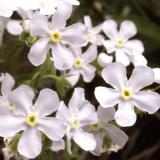 © Pete Saloutos/Panoramic Images (Washington Title Image Large)
© Pete Saloutos/Panoramic Images (Washington Title Image Large)

East Cascades Vegetation
The East Cascade ecoregion is one of Washington’s most heavily forested areas. Douglas-fir is found nearly throughout the varied forests.
At the crest, subalpine fir, whitebark pine, Engelmann spruce and mountain hemlock prevail. At mid-elevations, roughly 4,000 to 6,000 feet, forests shift to a mix of western larch and lodgepole pine. Lower yet, ponderosa pine and Douglas-fir forest, with an understory of snowberry and Idaho fescue, is widespread and characteristic.
In the south of the ecoregion, Garry oak woodlands are common in the foothills. The lowest elevations of the East Cascades ecoregion dry out considerably. The ponderosa pine and Douglas-fir forests yield to big sagebrush and bunchgrass, the shrub-steppe vegetation of the Columbia Plateau.
Fire is a powerful force here. Its natural cycles have been disrupted for nearly a century. Fire once swept through dry ponderosa pine forests every 5 to 15 years, clearing away brush and ladder fuels. With management that included fire suppression, that pattern has changed. As a result, less frequent but larger fires have grown common.
Riparian and wetland areas also vary by elevation. In the mountains, coniferous wetlands play an essential role in hydrological cycles. They collect and release snowmelt to the headwaters of streams and rivers.
Lower elevation riversides support lush stands of black cottonwood, alder, and willow. These too are important hydrologically and biologically. They serve as nesting, feeding, and breeding sites for birds and as travel corridors for wildlife.
The moist meadows and talus cliffs of the Wenatchee Mountains shelter a number of endemic plants, such as the Wenatchee checker-mallow and Seely's silene. Priority efforts of the Washington Natural Heritage Program in the East Cascades aim at protecting habitat for rare species like the Wenatchee larkspur and the showy stickseed.
The Columbia River Gorge is another important center for rare plant biodiversity.
For details of this ecoregion within Washington, click a subheading in the left column.
View the more general description of this ecoregion in North America



